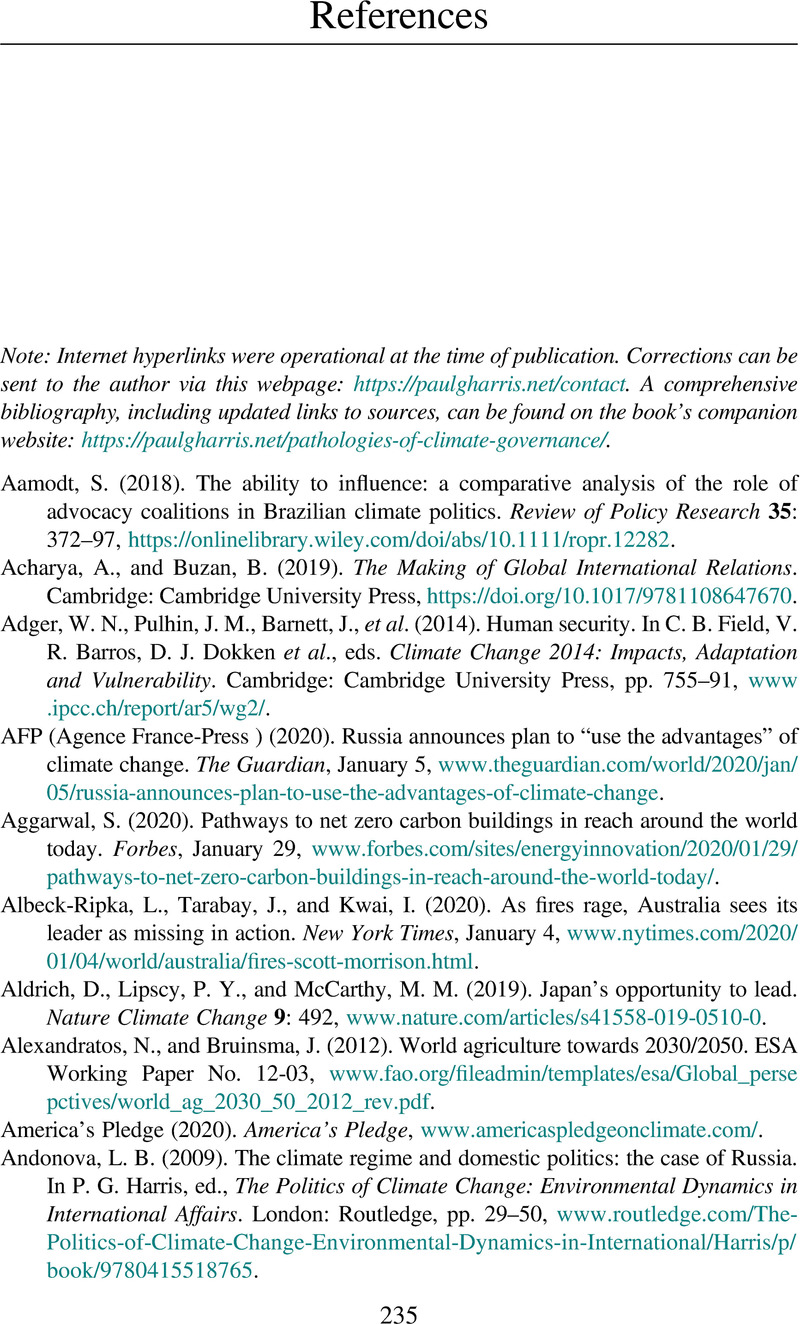References
Published online by Cambridge University Press: 27 February 2021
Summary

- Type
- Chapter
- Information
- Pathologies of Climate GovernanceInternational Relations, National Politics and Human Nature, pp. 235 - 270Publisher: Cambridge University PressPrint publication year: 2021



